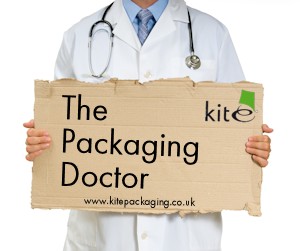How To Package Corrosive Products – The Packaging Doctor
The Art of Packaging Corrosive Goods – The Packaging Doctor
Opening the Door to Solutions

Dear Doctor,
I hope you're well. My name is James, and I work in product development at a major online DIY retailer. Recently, we’ve secured exclusive rights to sell a high-demand metal component from the U.S., which is fantastic news for us. However, there’s one big challenge: the component is highly corrosive. We’ve tried everything from polythene bags to custom foam inserts, but nothing seems to stand up to its corrosive nature. Since we’re shipping globally, the packaging must be durable enough to survive long-distance travel. Do you have any advice?
Looking forward to hearing from you soon,
James
Dear James,
Firstly, congratulations on acquiring this prestigious contract! Securing a deal with such a sought-after product is no small feat. While I’d love to see the component in person to offer tailored guidance, I can provide some general recommendations based on your description. Given the corrosive nature of the metal, I strongly suggest using VCI (Volatile Corrosion Inhibitor) packaging solutions. These materials are specifically designed to combat corrosion and prevent rust, making them perfect for your situation.
A great starting point would be VCI grip-seal bags. These bags are not only effective but also reusable, streamlining your packaging process. To ensure they hold up during transit, it’s important to test them in a controlled environment first. Give the bags a week with the component inside, and check if they remain intact. If they do, you can feel confident sending them off to customers. For added protection, you might consider wrapping the component in VCI-coated paper before placing it in the bag.
Lastly, since this is a new product, I recommend conducting thorough testing in a laboratory setting to verify the durability of the packaging under various conditions. This step is crucial to guarantee customer satisfaction and minimize risks. If you need further assistance or have specific concerns, don’t hesitate to reach out to our sales team at 02476420065.
Best regards,
The Packaging Doctor
Note: All the packaging problems featured here are based on real inquiries from our clients or potential clients.
Have a packaging dilemma? Let us help!
Tweet us @kitepackaging or email us at packagingdoctor@kitepackaging.com.
Fiberglass insect screen is woven from permanent glass yarn which has been coated with a protective vinyl to ensure lasting beauty, colour(black, gray) and flexibility. Fiberglass is noncombustible and will not rust, corrode or stain. Lightweight and economical, fiberglass mosquito screen comes in several different weaves and thread diameters.
I.Plain weave fiberglass Window Screen;
II. Twist weave fiberglass window screen.
Fiberglass window screen is woven by single PVC coated fiberglass yarn, polyester and PP/PE, after the heat treatment, the mesh is clear and stable, and has good capacity in ventilation and transparency. It also has the capacity of weathering-resistant, burning-resistant, high intensity, no pollution, etc. It is widely used in window and garden to protect against the mosquito and other insects.
Fiberglass Window Screen Mesh, Mosquito insect Net, Fabric Roll
Anping County chengchuang Traffic Wire Mesh Manufacture Co., Ltd , https://www.xhmetalfence.com